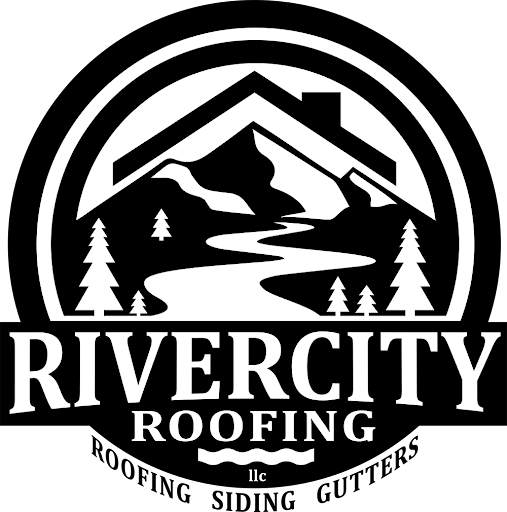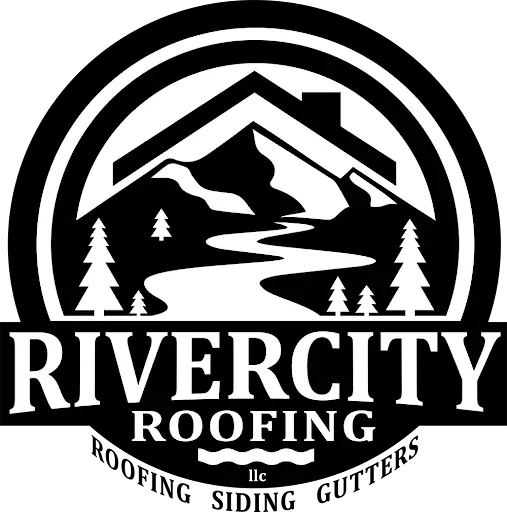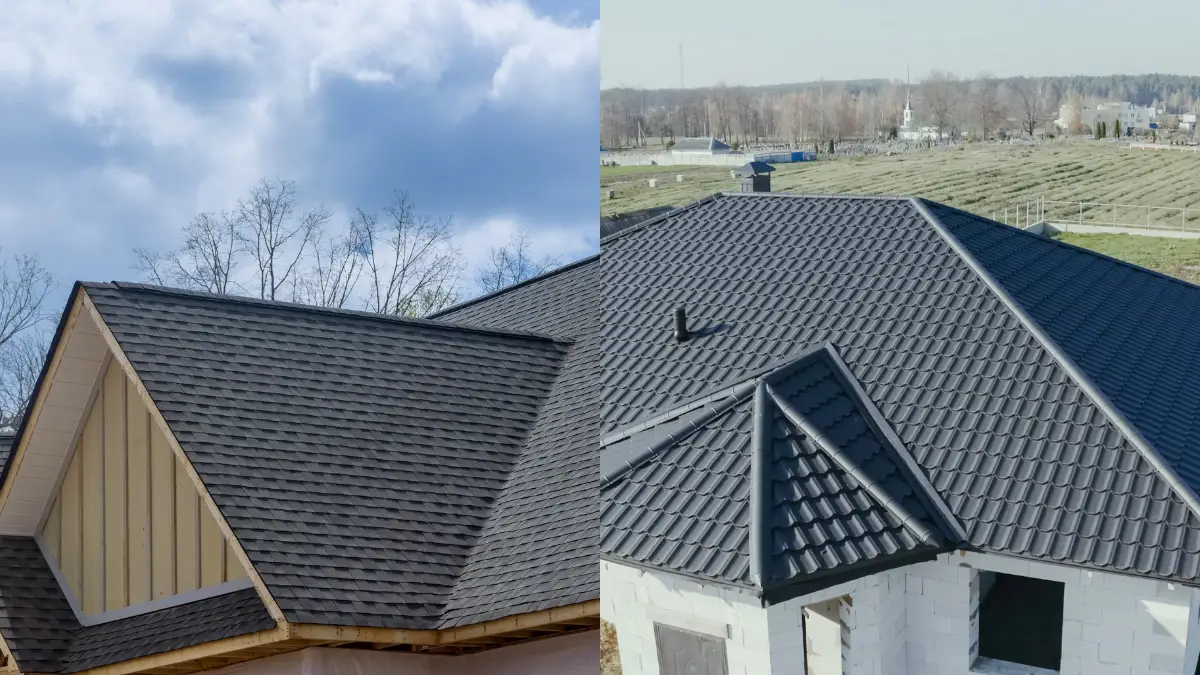When it comes to roofing choices, homeowners often find themselves weighing the metal roof cost vs shingles cost. This decision has a significant impact on both short-term expenses and long-term financial planning for a home. In 2024, the debate between metal roofing and traditional shingles continues to be a hot topic, with each option offering distinct advantages and cost considerations.
To make an informed decision, it’s crucial to analyze various factors beyond just the initial price tag. This article delves into the cost comparison between metal roofs and shingles, examining their upfront expenses, durability, energy efficiency, and potential savings over time. By exploring these aspects, we aim to help you determine which roofing option aligns best with your budget and long-term home investment goals.
Introduction to Metal Roofing and Shingles
Brief Overview of Metal Roofs and Asphalt Shingles
When it comes to choosing a roofing material, homeowners often find themselves deciding between metal roofs and asphalt shingles. Metal roofs are renowned for their exceptional durability, energy efficiency, and long lifespan. They are made from materials like steel, aluminum, copper, or zinc, and can last anywhere from 40 to 70 years, with some premium metals enduring even longer. Metal roofing is also highly resistant to severe weather conditions, making it a reliable choice for areas prone to extreme weather.
On the other hand, asphalt shingles are a more budget-friendly option, known for their affordability and ease of installation. They come in various styles and colors, allowing homeowners to achieve a desired aesthetic without breaking the bank. However, asphalt shingles have a shorter lifespan, typically lasting around 20 to 30 years, depending on the type and quality of the shingles. Despite their shorter lifespan, asphalt shingles remain a popular choice due to their lower initial cost and widespread availability.
In this article, we will delve into the costs associated with both metal roofing and asphalt shingles, examining material costs, labor expenses, and other factors that influence the overall cost of a roof replacement project.
Initial Cost Comparison: Metal Roofs vs Shingles
When comparing the metal roof costs versus shingles, it’s essential to consider both the upfront expenses and long-term value. Let’s break down the initial costs associated with these two popular roofing options.
Average costs for materials and installation
The price difference between metal roofs and shingles is significant when looking at initial costs. As of 2024, metal roofs generally have a higher upfront cost compared to asphalt shingles.
The costs associated with metal roof installation can vary based on materials, labor, and project complexity.
For a typical 2,000 to 3,000 square foot roof, here’s what you can expect to pay:
- Asphalt shingle roofs: USD 5,000 to USD 18,000
- Metal roofs: USD 7,081 to USD 110,150
Breaking it down further:
- Asphalt shingles cost about USD 4 to USD 8 per square foot
- Corrugated metal roofing costs around USD 4 to USD 8 per square foot
- Standing seam metal roofing ranges from USD 8 to USD 14 per square foot
It’s important to note that these prices include both materials and installation. Labor costs for roofing contractors typically range from USD 30 to USD 80 per hour or USD 2 to USD 3 per square foot for shingle installation. For metal roofs, installation labor costs are slightly higher, ranging from USD 3 to USD 5 per square foot.
Factors affecting pricing
Several factors have an impact on the overall cost of both metal roofs and shingles:
- Roof size and complexity: Larger roofs require more materials and labor, increasing the total cost. Complex roof designs with multiple angles, dormers, or skylights also add to the expense.
- Material quality: Higher-quality materials come with a higher price tag. For example, architectural asphalt shingles cost more than basic 3-tab shingles, while premium metals like copper are significantly more expensive than steel. When considering metal roofing panels, it’s important to factor in their longer life expectancy and lower maintenance needs.
- Roof pitch: Steeper roofs are more challenging to work on, which increases labor costs and safety requirements.
- Accessibility: Roofs that are difficult to access due to landscaping, fences, or other obstacles may incur additional labor costs.
- Removal of existing roofing: If your current roof needs to be removed before installation, this adds to the overall cost. Removing and disposing of an old asphalt shingle roof can increase the project cost by about 10%.
- Underlayment and additional materials: The type of underlayment chosen and any necessary additional materials can affect the total cost.
Regional price variations
The cost of metal roofs vs shingles can vary significantly depending on your location. Factors that contribute to regional price differences include:
- Local labor rates: Installation costs tend to be higher in metropolitan areas compared to rural locations.
- Climate considerations: Regions with extreme weather conditions may require specific roofing materials or additional features, affecting the overall cost.
- Availability of materials: Shipping costs and local supply can influence material prices in different regions.
- Local building codes: Some areas may have stricter building codes or require specific roofing materials, which can impact costs.
- Market competition: Areas with more roofing contractors may have more competitive pricing.
It’s worth noting that while metal roofs have a higher initial cost, they often provide better long-term value. Metal roofs typically last three times longer than asphalt shingles, which means fewer replacements over time. Additionally, metal roofs can increase your home’s resale value by up to 6% compared to asphalt shingles.
When making your decision, it’s crucial to consider both the upfront costs and the long-term benefits of each roofing option. While asphalt shingles may be more budget-friendly initially, metal roofs can offer significant savings over their lifetime. Factors that contribute to regional price differences include local labor rates, climate considerations, and the overall metal roofs cost. To get an accurate estimate for your specific situation, it’s best to get multiple quotes from reputable roofing contractors in your area.
Free Roof Inspections. Fast. Reliable.
Is your roof ready to weather the storm? Dont risk property damage. Our free roof inspections provide expert analysis to identify potential issues before they become costly problems.
Professional Roofing Installation
Overview of Professional Installation Costs
When it comes to professional roofing installation, costs can vary significantly based on the type of roofing material, the size of your roof, and the complexity of the installation. On average, professional installation for metal roofing ranges from $3 to $5 per square foot, while asphalt shingles typically cost between $2 to $3 per square foot. However, these figures can fluctuate depending on factors such as location, the roofer’s experience, and the specific requirements of your project.
In addition to the base installation costs, there are several other expenses to consider:
- Removal of Old Roofing Materials: If your existing roof needs to be removed, this can add $1 to $5 per square foot to the overall cost.
- Installation of New Underlayment: Underlayment is a crucial component that provides an extra layer of protection. This can cost between $0.50 to $2 per square foot.
- Installation of New Flashing: Flashing helps prevent water from seeping into your home at joints and edges. The cost for new flashing can range from $500 to $2,000, depending on the complexity of the job.
- Permits and Inspections: Depending on your local regulations, you may need permits and inspections, which can add another $500 to $2,000 to your project.
Overall, the total cost of professional roofing installation can range from $8,000 to $20,000 or more, depending on the size and complexity of your roof. While these costs may seem substantial, hiring a professional roofer ensures that the job is done correctly and safely, providing you with peace of mind and a roof that will stand the test of time.
Long-Term Cost Analysis: Lifespan and Durability
When comparing metal roofs vs shingles cost, it’s crucial to look beyond the initial price tag and consider the long-term financial implications. This analysis helps homeowners make an informed decision based on the overall value and durability of their roofing investment.
Expected lifespan of metal roofs vs shingles
The lifespan of a roof has a significant impact on its long-term cost-effectiveness. Metal roofs generally outlast asphalt shingles by a considerable margin. As of 2024, here’s what you can expect:
- Asphalt shingle roofs: On average, these last around 20 years. However, the lifespan varies depending on the type of shingle:
- 3-tab asphalt shingles: Up to 20 years
- Architectural asphalt shingles: 22-25 years
- Luxury asphalt shingles: 30 years or more in ideal conditions
- Metal roofs: These can last significantly longer, with lifespans ranging from 40 to 70 years. Some specific types include:
- Exposed fastener metal roofs: Around 20-30 years with proper maintenance
- Steel standing seam metal roofs: 30-50 years minimum. A standing seam metal roof is known for its durability and can last 30-50 years or more with minimal maintenance.
- Premium metals (like copper or zinc): Up to 100 years or more
This substantial difference in lifespan means that while metal roofs have a higher upfront cost, they may prove more cost-effective in the long run. Over a 45-year period, a metal roof could potentially cost around USD 23,000, compared to USD 57,000 for asphalt shingles when factoring in replacement costs.
Maintenance and repair costs over time
The ongoing costs associated with maintaining and repairing a roof play a crucial role in determining its overall affordability. Here’s how metal roofs and shingles compare:
Asphalt shingle roofs:
- Require annual maintenance and inspections
- More prone to damage from severe weather, leading to higher repair costs
- May need replacement of individual shingles due to wear and tear
Metal roofs:
- Require minimal maintenance, with inspections recommended every year or two
- Standing seam metal roofs need virtually no maintenance after installation
- Exposed fastener metal roofs may need routine maintenance to replace fasteners
- More resistant to severe weather, resulting in fewer repairs
The lower maintenance requirements and durability of metal roofs can lead to significant savings over time. While asphalt shingles may have lower upfront costs, the cumulative expenses for repairs and maintenance can add up quickly.
Impact on home insurance premiums
The type of roof on your home can have an impact on your insurance premiums. Insurance companies consider several factors related to roofing when determining rates:
- Age and condition of the roof: Newer roofs and those in good condition generally result in more favorable rates.
- Material durability: Fire-resistant and impact-resistant materials, like metal, can lead to lower premiums.
- Weather resistance: Roofs that can withstand severe weather conditions may qualify for discounts.
Metal roofs often have an advantage in this area due to their durability and fire-resistant properties. Some insurance companies offer discounts of 10% to 15% for homes with metal roofs, especially those with Class IV impact resistance ratings.
However, it’s important to note that while metal roofs can lead to insurance savings, asphalt shingles may have a higher percentage of cost recouped in terms of resale value. According to recent data, asphalt shingle roofs have a national average ROI of 61.1%, compared to 48.9% for metal roofs.
When weighing the metal roof vs shingles cost, it’s essential to consider these long-term factors. While metal roofs have a higher initial investment, their extended lifespan, lower maintenance needs, and potential insurance savings can make them a more cost-effective choice over time. However, the best option for your home will depend on your specific circumstances, budget, and long-term plans.
Energy Efficiency and Potential Savings
When comparing metal roof vs shingles cost, it’s crucial to consider the energy efficiency and potential savings each option offers. Both roofing materials have different impacts on a home’s energy consumption and long-term utility bills.
Cooling and heating cost differences
Metal roofs and asphalt shingles have distinct effects on a home’s temperature regulation. Metal roofing has a significant advantage in warmer climates, as it reflects most of the sunlight and heat that beats down on the structure. This reflective property helps maintain cooler indoor temperatures, reducing the need for air conditioning.
On the other hand, asphalt shingles tend to absorb heat, especially darker-colored ones. This absorption can lead to increased indoor temperatures, causing HVAC systems to work harder and consume more energy to cool the building. In some cases, structures with asphalt shingle roofs can become 20 to 25 degrees hotter inside compared to those with metal roofs.
However, it’s worth noting that metal roofing can make homes in colder climates more expensive to heat. The reflective properties that benefit warm regions may work against homeowners in areas with harsh winters.
Energy-saving features of metal roofs
Metal roofs offer several energy-saving features that contribute to their overall efficiency:
- High reflectivity: Metal roofs can reflect up to 70% of the sun’s energy back into the atmosphere, significantly reducing heat absorption.
- Thermal emittance: Metal has a high rating for thermal emittance, which means it efficiently releases absorbed heat back into the environment.
- Above-sheathing ventilation (ASV): Many metal roofing systems incorporate ASV, allowing heat to dissipate into the atmosphere rather than being absorbed by the building.
- Cool roof pigments: Some metal roofs have coatings with cool roof pigments that enhance their ability to reflect solar energy.
These features combine to make metal roofs highly energy-efficient. Studies have shown that metal roofing can potentially reduce cooling energy costs by as much as 20%. Some estimates suggest that homeowners can save up to 40% on their energy costs with a metal roof.
Long-term utility bill impact
The energy efficiency of metal roofs has a significant impact on long-term utility bills. Here’s how metal roofs compare to asphalt shingles in terms of energy savings:
- Reduced cooling costs: Metal roofs can lower cooling expenses by up to 25%, according to some studies. This reduction is due to their ability to reflect heat and maintain cooler indoor temperatures.
- Year-round savings: While metal roofs excel in warm climates, they can also provide benefits in colder regions. The air gap created by some metal roofing installation methods acts as insulation, preventing heat transfer out of the home in winter.
- Consistent performance: Metal roofs maintain their energy-efficient properties over time, ensuring long-lasting savings on utility bills.
- Potential tax credits: The advanced reflectivity of metal roofs may qualify homeowners for energy-related tax credits, further enhancing their cost-effectiveness.
In contrast, asphalt shingles generally don’t offer the same level of energy efficiency. Their heat-absorbing properties can lead to increased cooling costs, especially in warmer climates. However, light-colored asphalt shingles can provide some heat reflection benefits.
When considering the cost of metal roofing versus shingles, it’s essential to factor in these long-term energy savings. While metal roofs have a higher upfront cost, their energy efficiency can lead to significant savings over time. Some estimates suggest that metal roofs can reduce energy costs by about 50 percent compared to traditional asphalt roofs.
To get a clear picture of potential savings, homeowners should consider conducting a home energy audit. This assessment can help determine how much a metal roof might improve a home’s efficiency and reduce utility bills over time.
Conclusion: Making the Right Choice for Your Budget
Choosing between a metal roof and shingles has a significant impact on both short-term costs and long-term value for homeowners. While metal roofs come with a higher upfront price tag, they offer advantages in durability, energy efficiency, and potential insurance savings. On the other hand, asphalt shingles provide a more budget-friendly initial option, but may require more frequent replacements and maintenance over time.
In the end, the right choice depends on your specific situation, budget, and long-term goals for your home. To make an informed decision, it’s crucial to weigh the upfront costs against potential long-term savings, considering factors such as energy efficiency, maintenance needs, and your local climate. Getting quotes from reputable contractors and conducting a home energy audit can help you determine which roofing option aligns best with your financial plans and home investment goals.



